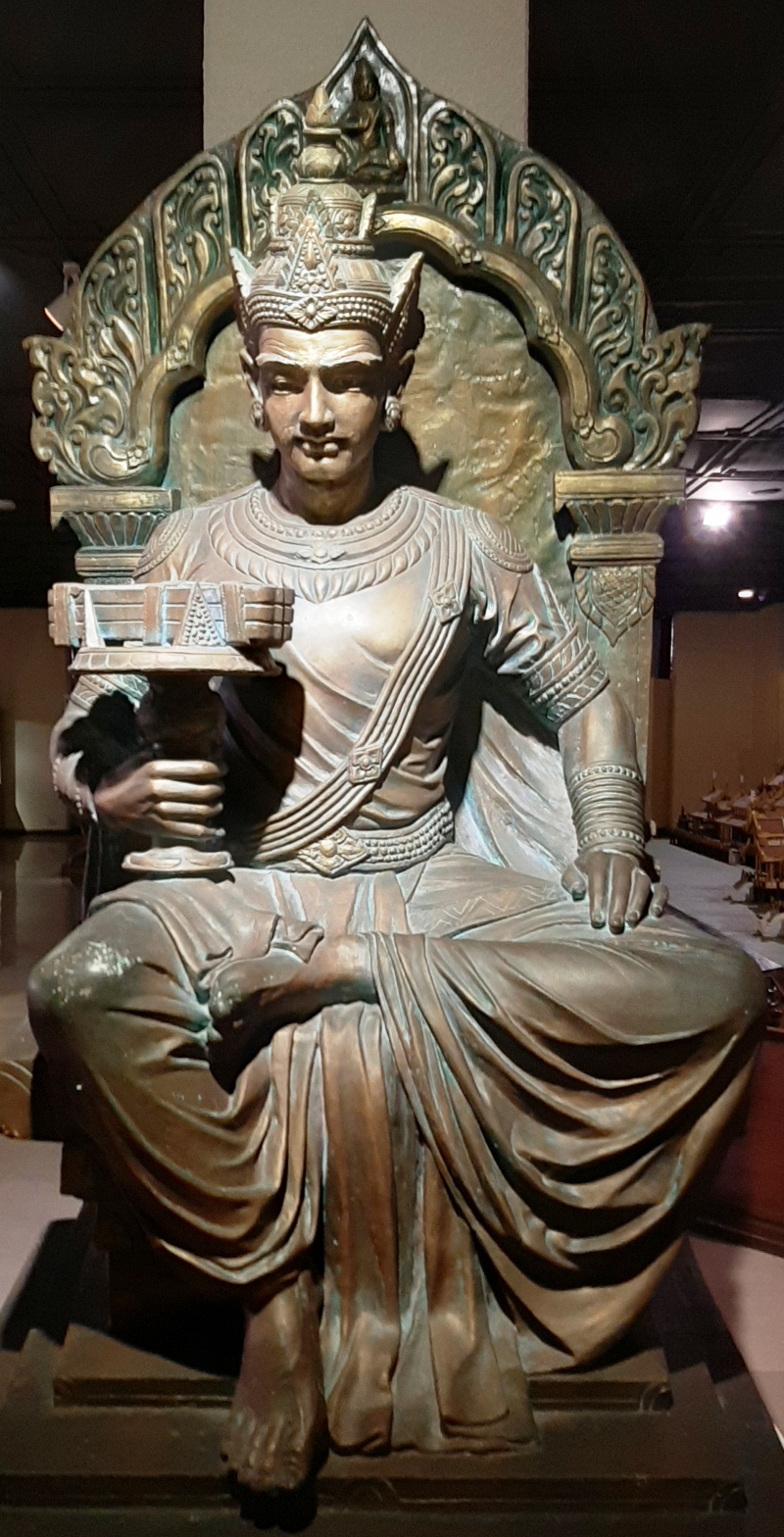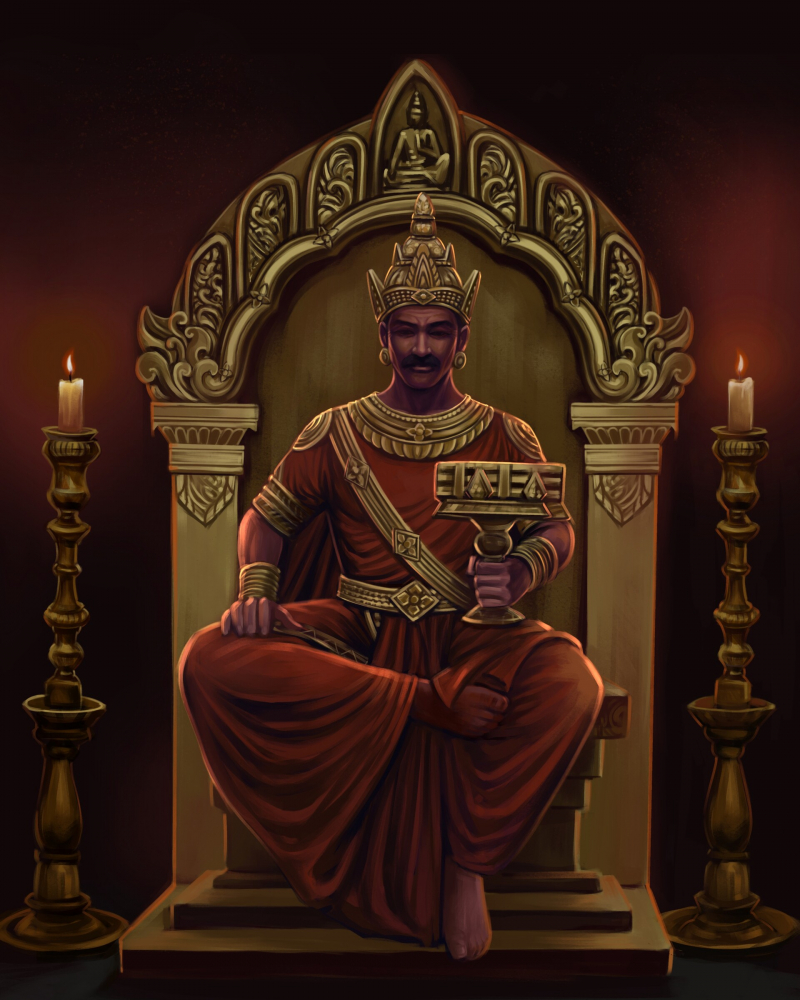Anawrahta
Anawrahta Minsaw (11 May 1014 - 11 April 1077) was the founder of the Pagan Empire. Anawrahta, considered the father of the Burmese nation, transformed a small principality in the dry zone of Upper Burma into the first Burmese Empire, which served as the foundation for modern-day Burma (Myanmar). Burmese history begins with his accession to the Pagan throne in 1044.
For the first time in history, Anawrahta unified the entire Irrawaddy valley and placed peripheral regions such as the Shan States and Arakan (Rakhine) under Pagan's suzerainty. He successfully halted the Khmer Empire's advance into the Tenasserim coastline and Upper Menam valley, establishing Pagan as one of the two major kingdoms on mainland Southeast Asia.
Anawrahta, a strict disciplinarian, instituted a number of significant social, religious, and economic reforms that would have long-lasting consequences in Burmese history. His social and religious reforms influenced modern-day Burmese culture. He transformed the parched, arid regions around Pagan into the main rice granaries of Upper Burma by building a series of weirs, giving Upper Burma an enduring economic base from which to dominate the Irrawaddy valley and its periphery in the centuries that followed. He left behind a strong administrative system that was followed by all subsequent Pagan kings until the dynasty's demise in 1287. The success and longevity of Pagan rule over the Irrawaddy valley laid the groundwork for the rise of Burmese language and culture, as well as the spread of Burman ethnicity in Upper Burma.
Anawrahta's legacy extended far beyond modern Burma's borders. His acceptance of Theravada Buddhism, as well as his success in halting the advance of the Khmer Empire, a Hindu state, provided a much-needed reprieve and safe haven for the Buddhist school, which had been in retreat elsewhere in South and Southeast Asia. He was instrumental in reviving Theravada Buddhism in Ceylon, the Buddhist school's original home. The success of the Pagan dynasty enabled later growth of Theravada Buddhism in Lan Na (northern Thailand), Siam (central Thailand), Lan Xang (Laos), and the Khmer Empire (Cambodia) in the 13th and 14th centuries.
Anawrahta is one of Burmese history's most famous kings. His life stories (legends) are common in Burmese folklore and have been adapted for popular literature and theater.
Burma, which has been closed off to the outside world for a long time, remains a mysterious place in many ways. Indeed, we know very little about the famous people who have left their imprint on this country. The following list of the most important historical figures in Myanmar has been compiled from various sources in order to provide you with a more complete picture of this country.







